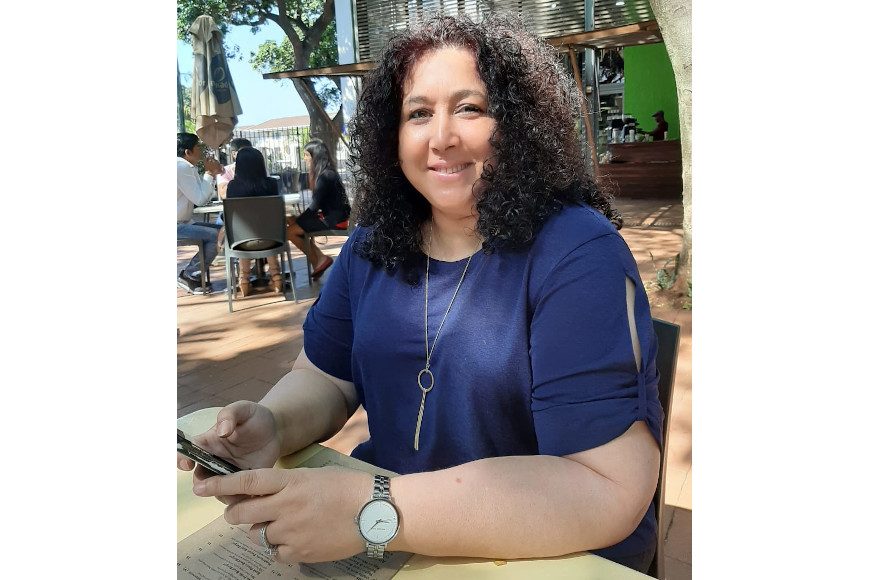The Employee Wellness Centre (EWP) at the Durban University of Technology (DUT) recently hosted a Disability Toolkit webinar via Microsoft Teams. The webinar was held to promote a barrier free, disability confident and inclusive culture at DUT.
EWP Manager, Mrs Samantha Rajcoomar said the purpose of the webinar was to give the staff a better understanding of the concept of disability. She said it will help them to be better prepared to encounter and learn to deal with disability in a very sensitive but practical manner. She stated that it will help them to overcome the natural fear that each may have when it comes to employing and interacting with a disabled person.
“It is critical that staff and students empower themselves in order to create an inclusive, diverse university culture. There’s a perception that a disability is only physical and that is completely wrong. A key part of creating a disability inclusive environment at this university, lies in removing the attitudinal barriers that prevents stigmatisation, equal opportunities and participation. I am confident that this can be achieved through creating awareness around disability, as another form of diversity. Recognising the stereotype-based judgements and learning not to whisper that disability is something that needs to be treated with gentle sympathy. Let us explore our past experiences with disability and take note of our own thoughts, beliefs and opinions about them. Remember that pity stems from stereotypes while compassion stems from awareness and participation,” said Rajcoomar.
She then introduced the guest speaker, a social worker, Director of KZN Care Association and current Chairperson of the Durban Disability Sector Forum, Mrs Belinda Naidoo. She has over 28 years of experience working in the Disability sector. Her presentation titled: Understanding Disability at Work unpacked how the external environment contributes to disability.
“I am going to touch on little things that we need to do in order to make the environment conducive and to facilitate integration of people with disabilities into the workspace. Having a disability has a significant impact on your life and daily activities. The key is how you maneuverer or manage through that. There are many definitions of disability as there are impairments that cause the disability. The one thing that is common in all these definitions is the word inability. The focus is on what a person cannot do, they cannot walk, see or hear. The inability is a common thread throughout the definitions of disability,” said Naidoo.
She asked the guests to imagine always being perceived from a place of pity, hearing ‘oh shame’ after being introduced to someone new. She asked how they would feel if they were constantly judged by what they cannot do. Sadly, Naidoo said this happens frequently when it comes to disability, especially in the workplace, saying it all stems from a lack of understanding. However, Naidoo said people’s misconceptions should never affect a person’s ability to get a job or to be successful in that job.
Naidoo advised that it was time to rethink disability and it should start with everyone. She said that one should seek to understand rather than judge, focus on what people can do rather than what they cannot do and lastly explore how one can be more inclusive in his/her work setting.
“In order to understand disability, we need to ask ourselves where exactly is it located? Is it located within individuals or within society? The social model of disability is viewed not in terms of the individual’s impairment but in terms of environmental, institutional, and attitudinal barriers that impinge upon the lives of persons with disabilities, and which have the potential to impede their inclusions in many areas of life. This model is saying it’s not the person but it’s how the environment, institution and attitudes disables that person. It moves the location of the disability out of a person into social structures,” said Naidoo.
She added that the model assumes that external factors contribute to the creation of disability, such as the negative social perception, prejudice and stigma, segregation or labelling, unadaptable buildings, unavailability of assistive technologies, inaccessibility and non-inclusive policies and legislations. Naidoo said these situations lead to exclusionary practises that limit the participation of individuals on the basis of their impairment.
Addressing South Africa’s failure in achieving disability integration, Naidoo said it is caused by fear and anxiety, thinking that reasonable accommodation at the work place is too costly, lack of awareness and understanding and low expectation in terms of work performance. She highlighted that the fear is caused by how people are cautious about saying the right thing or offending people living with disabilities.
When speaking to people living with disabilities, Naidoo advised that one should speak to them directly and refer to them by name. Furthermore, she emphasised that it is important that one speaks in a manner that will not sound patronising.
As an employer, she said it is vital to create a culture of inclusion and integration. She concluded by emphasising that promoting language and etiquette for staff, managers and customers is vital in any business. The session was ended with a fruitful discussion.
Pictured: Mrs Belinda Naidoo.
Simangele Zuma


